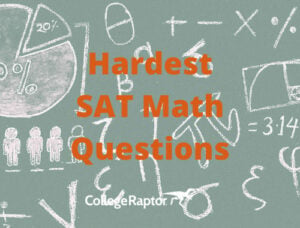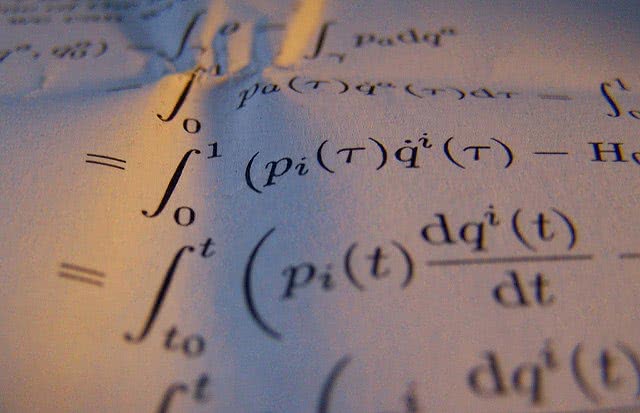Are you dreading the SAT Math section? You’re definitely not alone. If you struggle in this subject, you may have a bit of anxiety over this portion of the exam, even though you’re allowed a calculator for part of it! That’s okay. Knowing what to expect is really half the battle. Here’s what you need to know before you sit for the exam, how you can prepare, and a few places to find examples of the hardest SAT math questions you’ll face on test day.
What Does the SAT Math Section Include?
 There are 58 total questions in the math section of the SAT and you have 80 minutes to answer them. The first part is “no calculator,” lasts 25 minutes, and contains 15 multiple choice and 5 grid-ins. The second part allows you to have a calculator, lasts 55 minutes, and has 30 multiple choice and 8 grid-ins. You will have access to certain formulas during both sections so you do not need to memorize any.
There are 58 total questions in the math section of the SAT and you have 80 minutes to answer them. The first part is “no calculator,” lasts 25 minutes, and contains 15 multiple choice and 5 grid-ins. The second part allows you to have a calculator, lasts 55 minutes, and has 30 multiple choice and 8 grid-ins. You will have access to certain formulas during both sections so you do not need to memorize any.
The Math section includes questions on:
- Heart of Algebra. This section can ask questions about linear Equations, graphs, linear relationships, functions, word problems, and more.
- Problem Solving and Data Analysis. This covers ratios and proportions, scatterplots, data inferences, precents, data collections, and more.
- Passport to Advanced Math. This section covers questions about nonlinear expressions, polynomial factors, functions, quadratic equations, and more.
- Additional Topics. A majority of the questions will fall into one of the sections above, but some will also cover, geometry, complex numbers, and trigonometry.
There will be a few other questions in this exam that over geometry, trigonometry, radians,
Tips for Taking the SAT Math Section
Here are a few tips for taking the SAT Math section:
1. Take Practice Exams
One of the best things you can do when it comes to the SAT is to take practice exams. This will help you get as close to the “real deal” as you possibly can before your official test date. Take them under the same conditions, too. That means no distractions, time limits, no turning pages back to previous sections, and breaks at the correct times.
Once you’ve taken a practice exam, review your work. Are there certain sections of the Math portion that you did poorly on? You’ll want to focus on those areas before you take another practice test. You may even want to talk to your math teacher or consider working with a tutor for extra assistance if you’re really struggling in a specific area of math.
2. Note the Questions Go From Easy to Hard
The SAT Math sections are designed to have the easy questions first and the difficult questions last. Pacing yourself is necessary as you’ll want enough time to answer those difficult questions.
If you’re running out of time and you haven’t answered those hard questions, finish what you can and then guess the rest. There is no penalty for guessing if you’re seriously on the final two minutes of the section!
3. If It’s Not the Calculator Section, You Don’t Need a Calculator to Answer it!
Some students reach questions in the no-calculator portion of the SAT exam and believe that there must have been some mistake. Or it’s impossible to answer it without a calculator. However, you will not need your calculator on this section. If you are struggling without one, you’re probably missing or forgetting something you should know.
The Hardest SAT Math Questions
Just like beauty is in the eye of the beholder, the “hardest” math questions will vary from person to person. Taking a practice exam will absolutely help you determine the areas where you have the most difficulty.
However, if you want to see some actual examples of the math questions you’ll see on either your practice test or the real deal, this study guide from College Board has some excellent examples of hard questions you may run into, as well as further information on all of the sections.
- Heart of Algebra sample questions
- Problem Solving and Data Analysis sample questions
- Passport to Advanced Math sample questions
- Additional Topics sample questions
- Multiple choice sample questions
The number one thing you can do to improve your SAT Math section score and tackle those difficult questions is to be prepared. Practicing and knowing what to expect will absolutely help you come out on top, even when it’s time for your official test date.
Your SAT or ACT scores can absolutely have an impact on your admission chances – even if the school is test-optional! If you’re curious what schools are looking for in a student and the SAT score you should aim for, use our College Match tool.
I’m not sure if you want to copy/paste images of the hardest SAT math questions into the article, so I provided some links below to be included or to pull additional information from.





